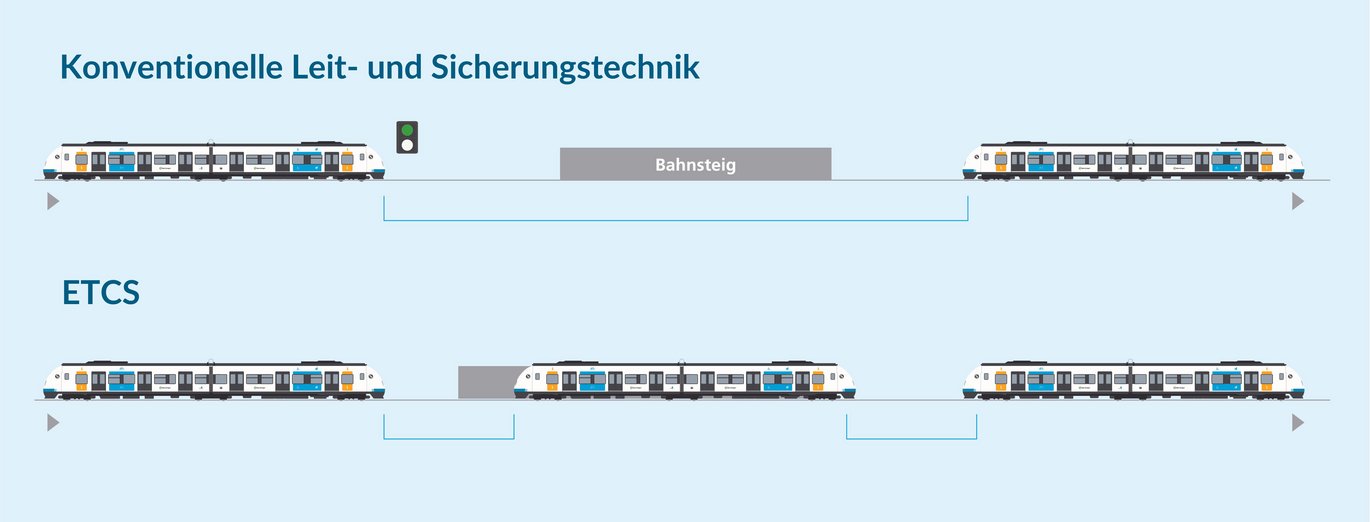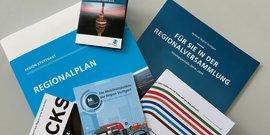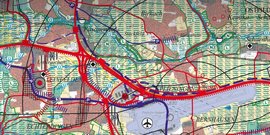Rail is the future: more and more people want to use public transport for a variety of reasons. This makes it all the more important to meet this demand by increasing capacity. The further expansion of infrastructure is becoming increasingly difficult in urban centres. In addition, tighter timetables and more trains on the tracks also mean potentially more susceptibility to disruption. To skilfully combine all these requirements, the Verband Region Stuttgart and DB Regio S-Bahn Stuttgart have opted for a very special solution:
ETCS (European Train Control System), the European standardised train control system developed for high-speed traffic, is to be used for the first time in Germany for highly frequented S-Bahn areas. The new Stuttgart Central Station and the S-Bahn network in the Stuttgart region will be the first major railway junction to be equipped with digital interlockings and the European Train Control System ETCS as part of the Stuttgart Digital Junction project. The node is a pilot project as part of the ‘Digital Rail Germany’ starter package.
What is ETCS?

ETCS is used to control and influence train movements on the railway network. The signal box monitors whether a train is authorised to travel on a section of track. ETCS level 2 without signals (oS) is to be introduced in Stuttgart. ETCS level 2 (oS) takes over the signalling and train control and therefore also determines the speed of the trains. Conventional signalling systems along the line can be dispensed with. The route signals only exist virtually and the corresponding information is displayed directly to the driver in the driver's cab in advance. Data is transmitted continuously and in both directions.
What impact will the new system have on the S-Bahn?
With ETCS Level 2(oS), trains can enter stations and stations closer together. This makes it much easier to compensate for previous stop time overruns. The ‘build-up’ of train delays is reduced. In addition, the introduction of ETCS provides the basis for an increase in speed on the main line, which can serve to reduce delays.
For example, blocks up to 30 metres short will be formed on the particularly busy S-Bahn main line. This alone can reduce the train sequence by around half a minute. Further optimisations are possible. For example, further potential can be realised by introducing partially automated driving (ATO GoA 2) in conjunction with a traffic management system.
In order to be able to effectively implement the denser operation of the network, the Verband Region Stuttgart has procured a total of 58 new trains, which will provide the necessary increase in capacity in the network.
How is it implemented?
The new technology will be put into operation step by step. For the S-Bahn, this means that the section between Vaihingen and Filderstadt will be the first time in Germany that S-Bahn trains will run on a line without signals from May 2026. The new ETCS technology can then be put through its paces there before the core of the junction is put into operation with ETCS in September 2026 under high performance requirements.
In the following years, ATO GoA 2 (a type of remote-controlled cruise control), a traffic management system (CTMS) and the new FRMCS railway operation radio system will be used.
Which service expansions are to be implemented with ETCS?
The new possibilities with ETCS are to be used directly by S-Bahn travellers. In addition to a significant stabilisation of the S-Bahn timetable, additions are initially planned in the core area. When the new technology comes into operation, four more trains per hour will run from the northern branch beyond Schwabstraße to Stuttgart-Vaihingen. Two more will run to Böblingen. Many passengers would then no longer have to change trains at the main station, which could help to further stabilise operations there.
How is ETCS financed?
As usual with such a large project, the financing is made up of different components:
Country
Participation in a funding program as part of air pollution control. Among other things, the state is funding the purchase of 47 S-Bahn vehicles with around 106 million euros. The state is also funding the operation of the transport improvements by increasing the annual regionalization funds by 0.8 percent to 9.9 percent from 2021. The installation of ETCS and investments in infrastructure that are not covered by the federal government are also being funded. According to its own figures, the state government is contributing a total of around 330 million euros.
Stuttgart Region
For the testing and approval phase of the new technology, the contract between the Verband Region Stuttgart and DB Regio for the operation of the S-Bahn was extended until June 2032. It was also adapted for the extended service. The most important cornerstone of the contract extension is the procurement of 58 new vehicles. The Verband Region Stuttgart is taking out a loan of around 380 million euros to finance this and equip the vehicles with ETCS. It will finance this over the years 2020 to 2032, i.e. until the end of the term of the extended transport contract.
Back to overview S-Bahn






![[Translate to English:] S-Bahn](/fileadmin/_processed_/3/d/csm_058_-_S-Bahn_Stuttgart_ho___ehengleicher_Einstieg-1-rwilling_ce82cb0b0e.jpg)
















